The latest monthly permanent and long-term arrivals data from the Australian Bureau of Statistics (ABS) showed that 155,000 net permanent and long-term arrivals landed in Australia in January and February 2025.
This was the second-highest number on record and only a smidgen below last year’s record of 161,000 for the same period.
The following chart from Justin Fabo of Antipodean Macro illustrates how net overseas migration appears to have rebounded strongly in Q1 after moderating last year.
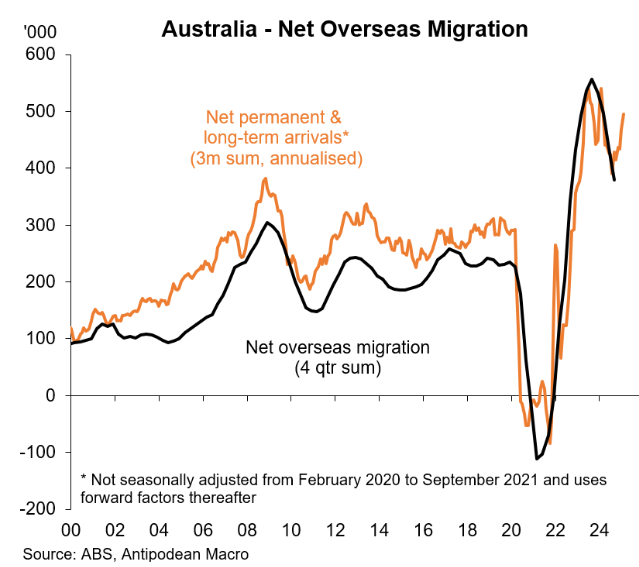
At the same time, the supply side of Australia’s housing market remains moribund.
Only 41,900 homes commenced construction in Q4 2024. This was 18,100 (30%) fewer than Labor’s housing target, which requires 60,000 homes to be built every quarter for five consecutive years.
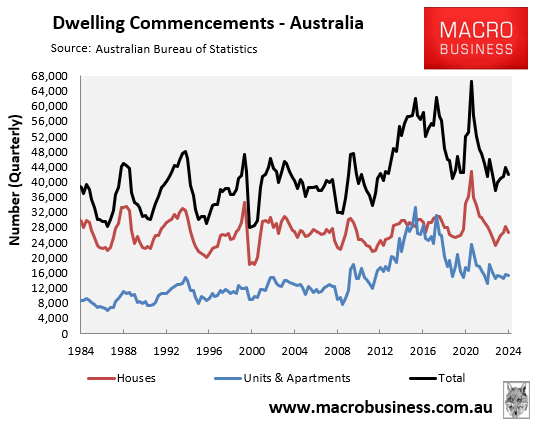
Only 168,050 dwellings commenced construction during the year to Q4 2024. The figure was 71,950 (30%) below the annual run rate of 240,000 required to meet Labor’s housing target.

The ABC spoke with a number of mayors from Sydney and Melbourne’s growth areas, which are under pressure from high net overseas migration.
The mayor of Sydney’s western suburb of Fairfield, Frank Carbone, declared the suburb “full” and called on the federal government to cut immigration:
“We just feel that sometimes the government uses the western suburbs to populate this country, but not necessarily put back the infrastructure that is needed to maintain all of our quality of life”, Carbone said.
“Fairfield is already full, you can’t keep on putting people into an area that’s full”.
He believes the solution “is sustainable migration” — which for him means fewer migrants.
“Immigration is a great thing for a country when you can bring people from different parts of the world with great knowledge, give them the opportunity,” he said.
“When you bring in too many, too quick, without the investment, this is what happens,” he said, referring to infrastructure and affordability issues in the area”.
Carbone was even more blunt about migration’s deleterious impact in an interview with News.com.au:
“Migration is the foundation this country has been built on — but it’s always been a sensible, regulated policy. At the moment it feels like the policy under Albanese has been unregulated and uncontrolled. It’s one of the biggest mistakes I’ve ever seen in public life”…
“There isn’t an empty house, there’s nothing available for anybody. Fairfield is on the outskirts — I can only imagine what it’s like everywhere else”…
“What we’ve had over the past few years with more than one million people coming in has had a huge impact on the quality of life for every Australian”.
“It’s put pressure on housing, pressure on rents and general cost of living. Quite clearly the government has made a huge mistake, because what I see in the street is people competing for the most important things in life that we need and should all be able to have — housing, food, energy”…
“It’s quite clear with the huge increase that the government has brought in that this has put our economy out of step”.
“I’m not talking about the bottom line or the GDP. It might suit Treasury to have higher numbers but it doesn’t suit our community. Everyone realises we can’t build enough houses to accommodate one million coming in overnight”…
“They’ve turned the Australian dream of owning a home and raising a family into an Australian nightmare quite simply because they were more worried about the bottom line”.
The ABC’s latest Vote Compass showed that roughly half (49%) of around 340,000 respondents wanted “many fewer” or “somewhat fewer” immigrants coming to Australia:

The ABC also noted that “a number of economists in Australia said high net migration in recent years played some role in limiting supply and driving up housing prices and rents”.
As usual, the ABC wheeled out two captured pro-Big Australia propagandists—the ANU Migration Hub’s resident shill, Alan Gamlen, and the Grattan Institute (which is sponsored by Big Australia lobby group, the Scanlon Foundation)—to debunk the claim that excessive migration is behind the rental crisis.
First up, here is Alan Gamlen, quoted directly from the ABC’s report:
“Migration is a small part of the puzzle of Australia’s housing crisis,” Mr Gamlen said.
“The bigger parts of the housing crisis that we have now is a natural increase of the Australian-born population, which is much larger than the migrant population and, more importantly, supply-side factors”.
Gamlen also reportedly said that migration is “plummeting as the trend has reversed with arrivals slowing and departures surging”.
Gamlen’s claim that natural increase is “much larger than the migrant population” and is the “bigger part” of the housing crisis is a blatant lie.
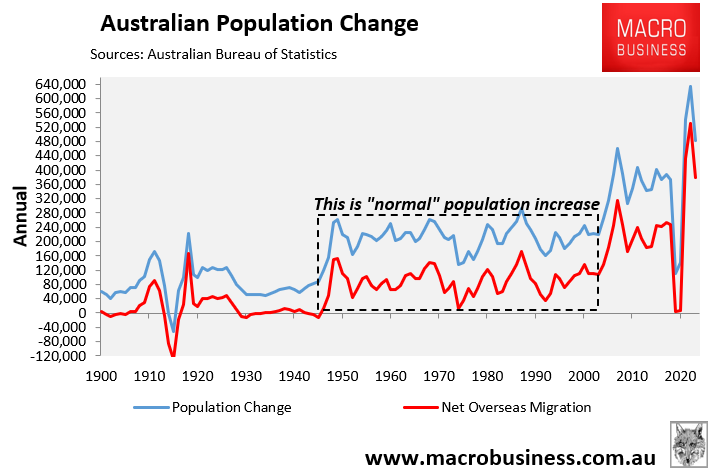
Over the past 20 years, net overseas migration has been the primary driver of Australia’s population growth and therefore housing demand.
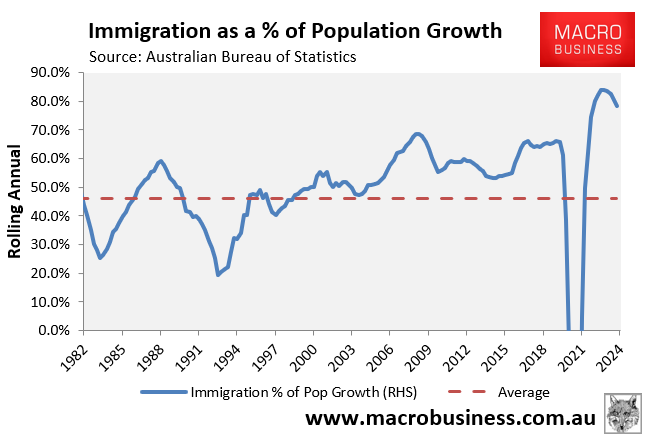
In fact, in the two years to Q3 2024, net overseas migration accounted for 82% of Australia’s population growth.
With Australia’s birth rate below replacement, Australia’s population would not grow without net overseas migration. Therefore, immigration is the sole demographic driver of structural housing demand over the long term.
Gamlen’s claim that immigration is “plummeting” is another blatant lie.
The 380,000 net overseas migration recorded in the year to Q3 2024 was higher than at any time in Australia’s pre-pandemic history. As shown in the first chart above, net overseas migration also appears to have reaccelerated in the first quarter of 2025.
Next up, we have Grattan Institute CEO Aruna Sathanapally who admits that Australia hasn’t built enough homes but claims that it has nothing to do with immigration:
“Let’s be clear, housing is unaffordable in Australia, but that is not the result of what we’ve been seeing in the migration numbers,” she said.
“We’ve had to concentrate housing on the edges of our cities, because we haven’t been very good at using our inner suburbs for the housing we need”…
“One is that it’s been many decades now that we have not built enough homes for the population that we have and that we knew we were going to have,” she said.
“Secondly … we don’t build the right sort of homes for the population that we need … we need homes that are the right size for households of one or two people”.
“A quarter of households in Australia are single-person households, and yet, our housing stock is made up of big houses and so we’re not using our houses efficiently … especially in our inner-city suburbs”.
First, Australia had one of the highest rates of housing construction in the world in the decade to 2023.
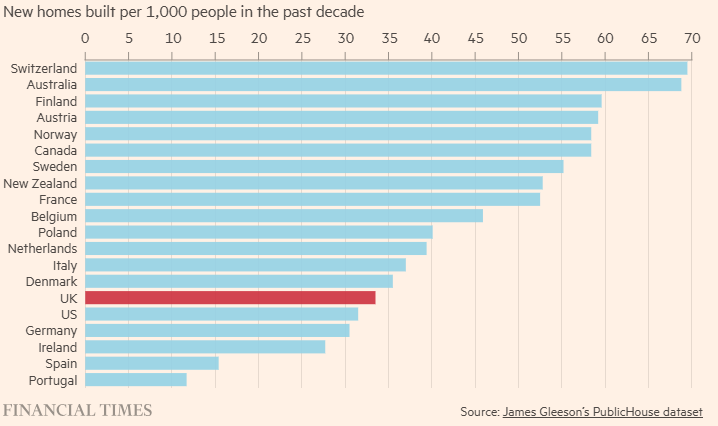
Australia also has one of the highest numbers of construction workers per capita, as illustrated below.
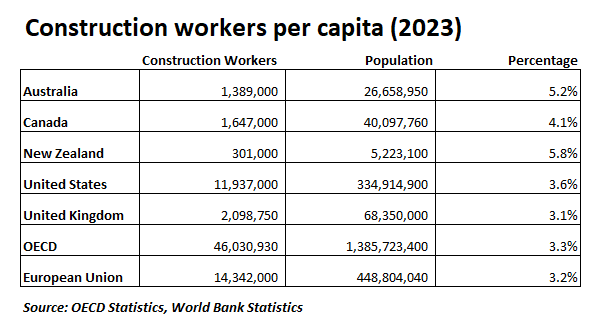
The reason why Australia has experienced a chronic housing shortage is because it has grown its population far more aggressively than other nations via mass immigration:
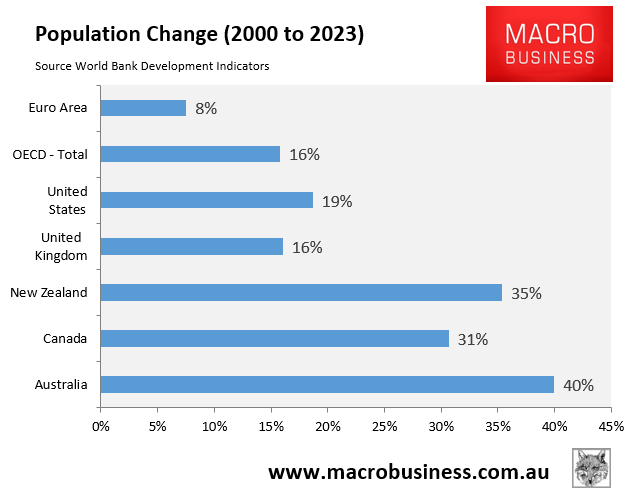
According to the Australian Bureau of Statistics’ (ABS) population clock, the nation’s population has swelled by 8.7 million people since the turn of the century, representing a growth rate of 46%.
No wonder Australia has not built enough homes.
The solution to the housing crisis, therefore, must involve cutting immigration to a level that is compatible with the nation’s capacity to build housing and infrastructure.
Heck, even the Housing Industry Association admitted that the government’s failure to control immigration is a “systemic policy failure” that “compounds the challenge of delivering sufficient housing”.
Sathanapally’s claim that Australia hasn’t built enough apartments “that are the right size for households of one or two people” is also asinine.
As the ABC noted in February 2025, the number of occupied apartments in Sydney, Melbourne, and Brisbane has grown by nearly 60% since 2006, easily exceeding the 22% growth in detached houses.
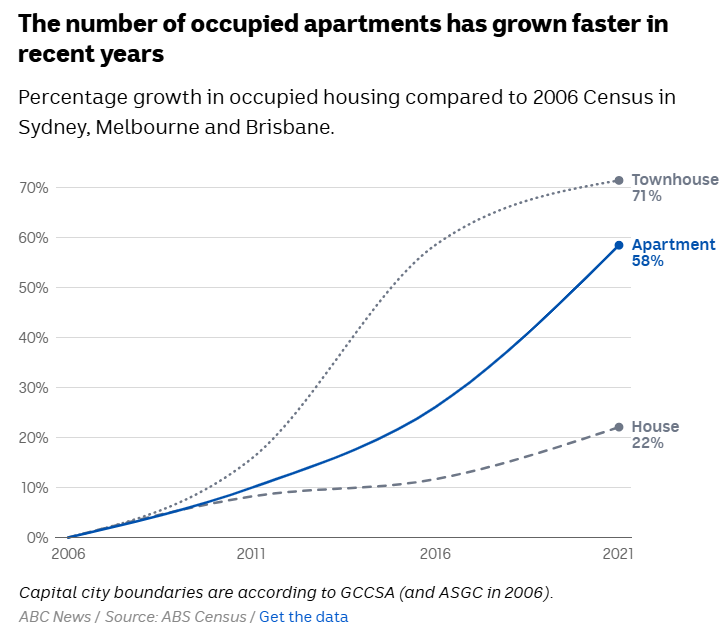
This apartment boom was driven by “an investor-driven proliferation of small, dark and stuffy apartments”.
“Spacious” three- or more-bedroom apartments also comprise only a tiny fraction of the nation’s apartment stock:
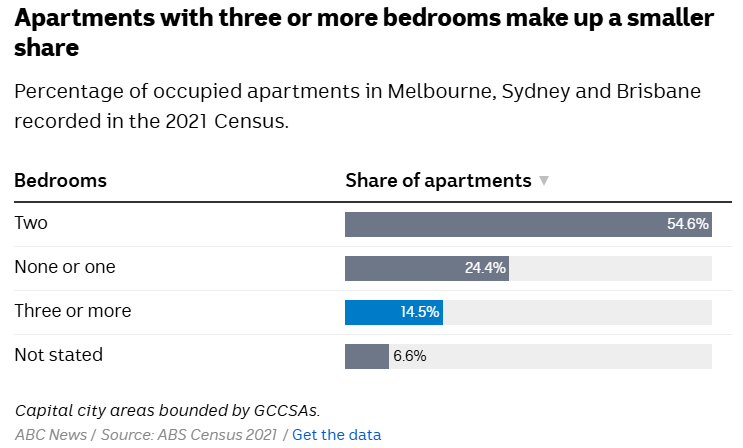
The reality is that most apartments in Australia are shoeboxes, negating Sathanapally’s arguments about the necessity of smaller housing.
In seeking the biased views of Alan Gamlen and Aruna Sathanapally, and refusing to interview anybody with a counterpoint, the ABC has once again proven itself to be a taxpayer-funded mouthpiece for Big Australia immigration.

